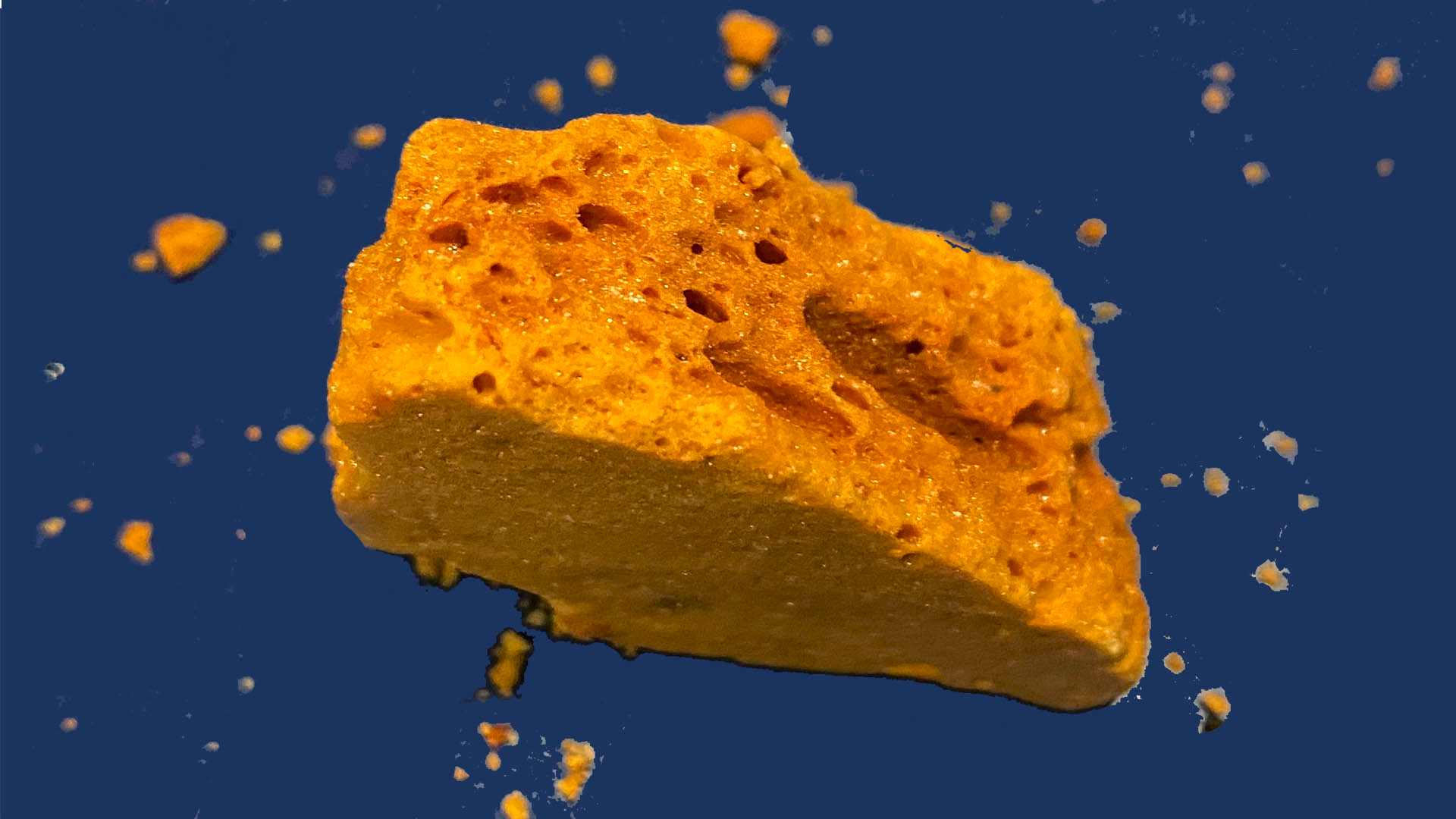Dalgona Candy: A Kitchen Experiment
Let's make this clear right now: the only things dalgona coffee and dalgona candy have in common is their appearance and their origins in South Korea. Although if you're going to get really pedantic, you'll note that only the name "dalgona coffee" originated in South Korea and the beverage itself came from south and southeast Asia. But they who get the most Instagram likes control the narrative.
Anyway. Dalgona coffee is instant coffee, sugar, and hot water whipped together and served with iced milk. Dalgona candy is sugar melted and whipped with a little bit of baking soda so it puffs up, and you can eat it by itself. It doesn't taste like coffee at all, which makes sense because there is no coffee in it. But both are the same shade of light brown, and they are both fluffy, at least when the dalgona candy is still warm. Hence the name.
A few weeks ago, shortly after I wrote about dalgona coffee for the first time, I got an email from a representative of Cafe Cha, a small chain of tea bars in Seoul and Tokyo. Cafe Cha was making its own dalgona coffee before the rest of the world caught on, only its interpretation was far more literal: baristas dropped chunks of dalgona candy into lattes as a sweetener. The rep asked if I wanted to try dalgona candy for myself, and I said "of course" because I'm always interested in new forms of candy, and I also really like getting packages.

The package arrived on a sad, gloomy day earlier this week. It contained a bag of dalgona candy, a small packet of sugar, and a dalgona candy-making kit. I was delighted. A project!
First I tasted the candy. It tasted a bit like toffee but mostly like burned sugar, which isn't a bad taste. It's light, like honeycomb, and it sticks to the teeth. It was hard to stop eating it, and I'm probably going to get lots of bad news once I get back to the dentist.
Then again, I haven't heard much about a tooth decay epidemic in South Korea, and kids there have been eating this stuff for 70 years. (Not that I've been looking too hard for South Korean tooth decay stats.)
The candy-making kit had a retro feel to it, as though nobody had bothered to update it since the prototype in the '50s. I was especially fond of the little copper spoon-pot, which reminded me of the accessories that came with my Easy-Bake Oven when I was little. But then I remembered that the Easy-Bake Oven cooked with a lightbulb while this dalgona candy kit requires you to stand over a stove. No American child would be allowed to use this thing unsupervised.

Hell, after my first batch set off the smoke alarm and made my dog cry piteously for several minutes, I concluded that maybe I, a full-grown adult, shouldn't be allowed to use this thing unsupervised.
Over time, though, I improved. The process isn't difficult, especially after Cafe Cha responded to our Instagram post with detailed instructions and a video. You melt one-and-a-half tablespoons of sugar in the little copper spoon-pot. Your likelihood of burning it decreases if you use lower heat and stir as you go. Once it's all melted, you drop in a large pinch of baking soda (approximately one-eighth of a teaspoon) and stir vigorously until it puffs up and looks like dalgona coffee. This is by far the most exciting part.

Then you scrape it onto the stainless steel plate that came with the candy-making kit (or a piece of parchment paper if you don't have a cute candy-making kit) and press down on it quickly and gently with the metal disc from the kit (or a rubber spatula). The whole process takes less time than it does to whip up a cup of dalgona coffee or even for you to read this paragraph. If you want to be fancy, you can cut it into shapes. If you pull it up too soon, you get strands of sugar, which look neat.

I have to admit, my own dalgona tasted more burned than Cafe Cha's, except for the parts where the baking soda wasn't incorporated as well as it could have been. I'm guessing it's probably easier to control the burned flavor if you melt more sugar in a bigger pot because it will cook more slowly.
In the morning, I dropped a chunk of dalgona candy into my regular coffee. It made some strange crackling noises as it melted, probably because of the baking soda, but it didn't taste much different than a regular lump of sugar. It would probably have been better with a latte, but I don't own a milk frother. Alas.
I'm still thinking of other possible uses for this dalgona kit. Cafe Cha serves dalgona scones, freshly baked scones that get covered with dalgona candy while it's still soft, and this sounds delightful. Please feel free to offer suggestions and share pictures of your own dalgona experiments.
